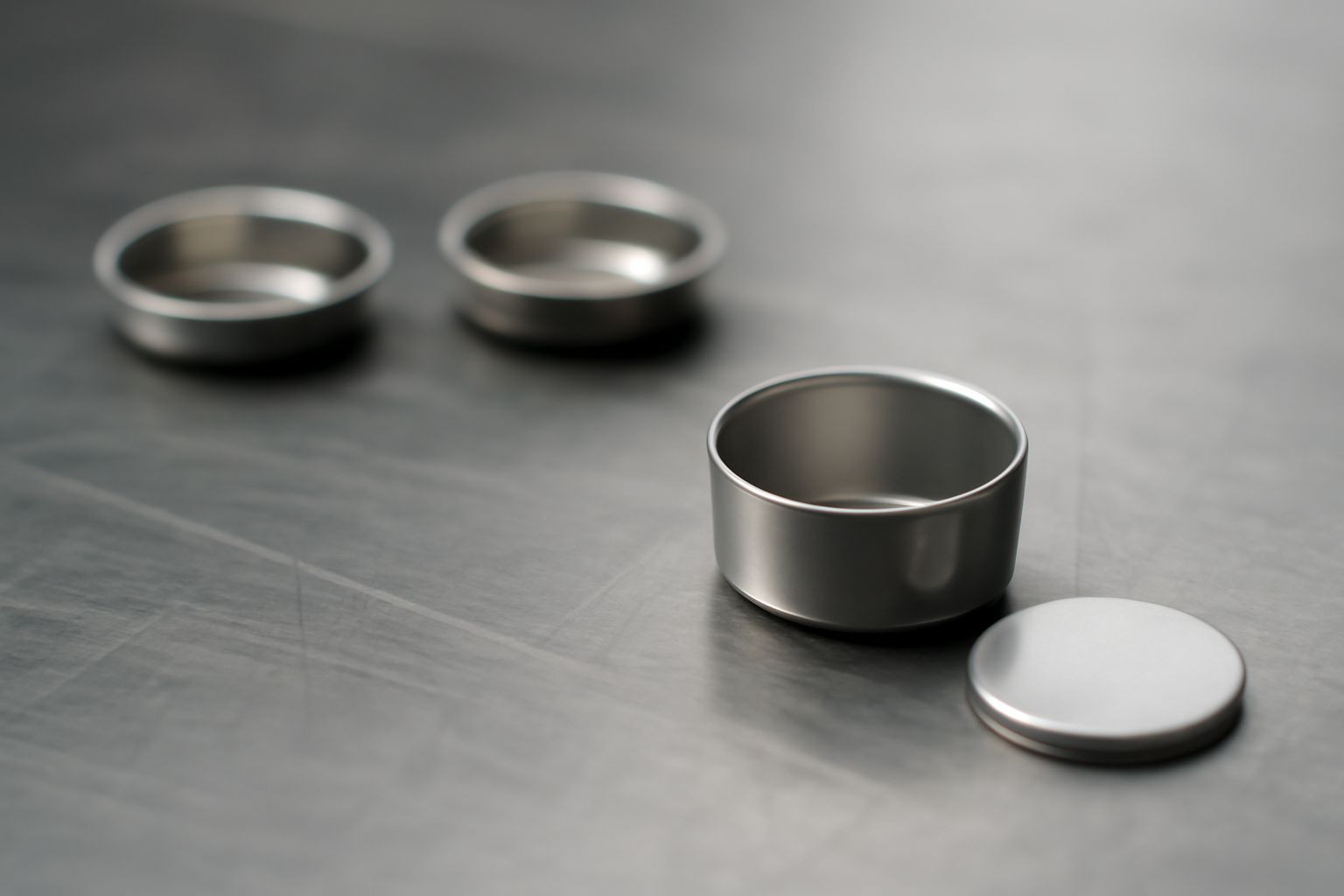Your cart is empty.
shop now
Your cart is empty.
shop now
Incorrect technical parameters in TGA-DSC pans or crucibles lead to poor thermal analysis results and wasted samples. Many labs make costly mistakes by ignoring details like size, material, or sealing.
Standard dimensions, thermal conductivity, temperature range, and sealing mechanisms are essential for TGA-DSC pans and crucibles. These factors greatly impact instrument compatibility, heat transfer, and data accuracy in every thermal analysis project.

I always recommend carefully reviewing pan or crucible specs before each new project. Understanding these technical values ensures the right match between test method, equipment, and sample for reliable analyses and reproducible results.
Improper pan sizing causes poor sample contact, unstable baselines, or data loss in sensitive tests. Many labs lose valuable information by not checking basic pan and crucible dimensions.
Most TGA-DSC sample pans have standardized outer diameters (usually 6-8 mm), heights (2-5 mm), and internal volumes (10-100 μL). Volume selection should match sample mass and test purpose.
| Type | O.D. (mm) | Height (mm) | Volume (μL) | Typical Use | Reference |
|---|---|---|---|---|---|
| Standard DSC pan | 6.5 | 2.5 | 20-40 | Heat flow (DSC) | Instrument manual |
| Large-volume TGA pan | 8.0 | 3.0 | 60-100 | Weight loss (TGA) | ScienceDirect |
| Micro-crucible | 3.2-5.0 | 1.5-2.0 | 5-20 | Trace samples | Microanalysis |
Before every purchase, I request the pan drawing or datasheet and match volume to the usual sample mass range for our methods. Precision in size increases the reliability of my results.
Poor material selection leads to uneven heating, peak distortion, or contaminated results. This can make critical transitions invisible and reduce instrument lifetime from unwanted reactions.
Aluminum, platinum, and alumina are top choices for their distinct thermal properties. Aluminum conducts heat well but is less chemical resistant. Platinum gives maximum inertness, while alumina resists high temperature with stable heating.
| Material | Thermal Conductivity (W/mK) | Chemical Resistance | Special Use | Reference |
|---|---|---|---|---|
| Aluminum | 237 | Low-moderate | Polymers, fast response | ScienceDirect |
| Platinum | 71.6 | Very high | Pharma, corrosive, high value | Nature |
| Alumina | 30 | High, moderate acids | Metals, ceramics | Materials Today |
Each time I plan a test, I cross-check the pan’s material with both instrument and sample requirements. Picking the wrong material is the main way to lose valid data in thermal analysis workflows.
Wrong temperature range means melted pans, ruined samples, or hazardous lab situations. No single pan suits every temperature window for TGA-DSC.
Aluminum works up to 600°C. Platinum covers from cryogenic up to 1700°C for high-temperature or reactive samples. Alumina handles up to 1600°C and works well for most ceramics and oxidizing conditions.
| Material | Min Temp (°C) | Max Temp (°C) | Notes | More Info |
|---|---|---|---|---|
| Aluminum | -80 | 600 | Good for polymers, avoid strong acids | Instrument handbook |
| Platinum | -196 | 1700 | Best for reactive/high-purity | ScienceDirect |
| Alumina | -100 | 1600 | Ceramics, slow ramp tests | Alumina |
I keep a temperature guide handy for every pan and crucible in our lab. Sticking within each material’s rated range gives safer operation, fewer failures, and more reliable test outcomes for every user.
Poor lids cause sample loss, contamination, or inaccurate volatile analysis. The wrong seal type destroys DSC or TGA results—especially for solvents or sensitive powders.
Sealing options include flat, crimped, hermetic, and vented lids. Hermetic lids stop vapor escape for volatiles. Vented lids allow gases to escape, needed for TGA degradation work.
| Lid Type/Seal | Use Case | Strength | Risk | External Resource |
|---|---|---|---|---|
| Flat Lid | Standard DSC tests | Easy to use | Leaking with volatiles | Instrument guide |
| Hermetic | Volatile/solvent samples | No vapor loss | Pressure buildup, needs tight fit | Hermetic Seal |
| Vented lid | TGA decomposition/gas tests | Controlled release | Sample mass loss, contamination | DSC/TGA guide |
| Crimped | Tight, manual seal | Seals well for solids | Operator error | Supplier instructions |
Every time I pick a seal, I match both the lid and material to the sample’s volatility and reaction pathway. Choosing the right closure keeps experiments accurate and the lab safe for all users.
Mastering the technical parameters of TGA-DSC pans and crucibles ensures instrument compatibility, precise heat flow, and valid results—helping every lab move forward with confidence in thermal analysis.
Contact technical support: info@redthermo.com